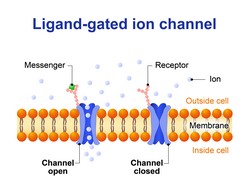The technological potential of ion channels
‘Ligand-gated ion channels’ (LGIC) are specialised receptors that, in response to certain stimuli, form a transmembrane pore and allow the migration of ions between the extra- and intra-cellular space. Research over the years has resulted in the extensive characterisation of LGIC function, especially in relation to neural signalling. In contrast, there is limited information on large families of ‘microbial LGICs’ (m-LGICs) from a genetic and functional point of view. To exploit the technological potential of m-LGICs, the EU-funded MIC-SN (Microbial ion channels for synthetic neurobiology) project performed systematic characterisation of their diversity. The long-term goal was to utilise them as biotechnology tools for controlling biological signals or as targets of new antimicrobial agents. From a biotechnological perspective, m-LGICs proved unsuitable for use in mammalian cells. However, researchers successfully achieved the functional expression of the Arabidopsis thaliana plant LGIC in human cells. This receptor exhibited all the desired properties that would allow for controlling mammalian nerve cells with orthogonal biomolecules. Since aberrant LGIC signalling of nerve cells can result in prominent dysfunctions, orthogonal manipulation of neuronal electrical signals could be used to treat neurological diseases such as epilepsy. In addition, LGICs could open the door to new agents that target microbes threatening health and agriculture.







